Monday, 9 January 2023
Cryoablation of large kidney lesion post-nephrectomy to preserve renal function.
Cryoablation of large kidney lesion post-nephrectomy to preserve renal function.
2:54
The team at Dijon University Hospital (France) performed this CAS-One IR case on a patient with a significant need to preserve renal function due to a left nephrectomy. A multi needle cryoablation (Boston Scientific) of a lesion the right kidney was performed with precise bracketing to ensure significant iceball coverage. Post-ablation confirmation showed technical success with sufficient margins.
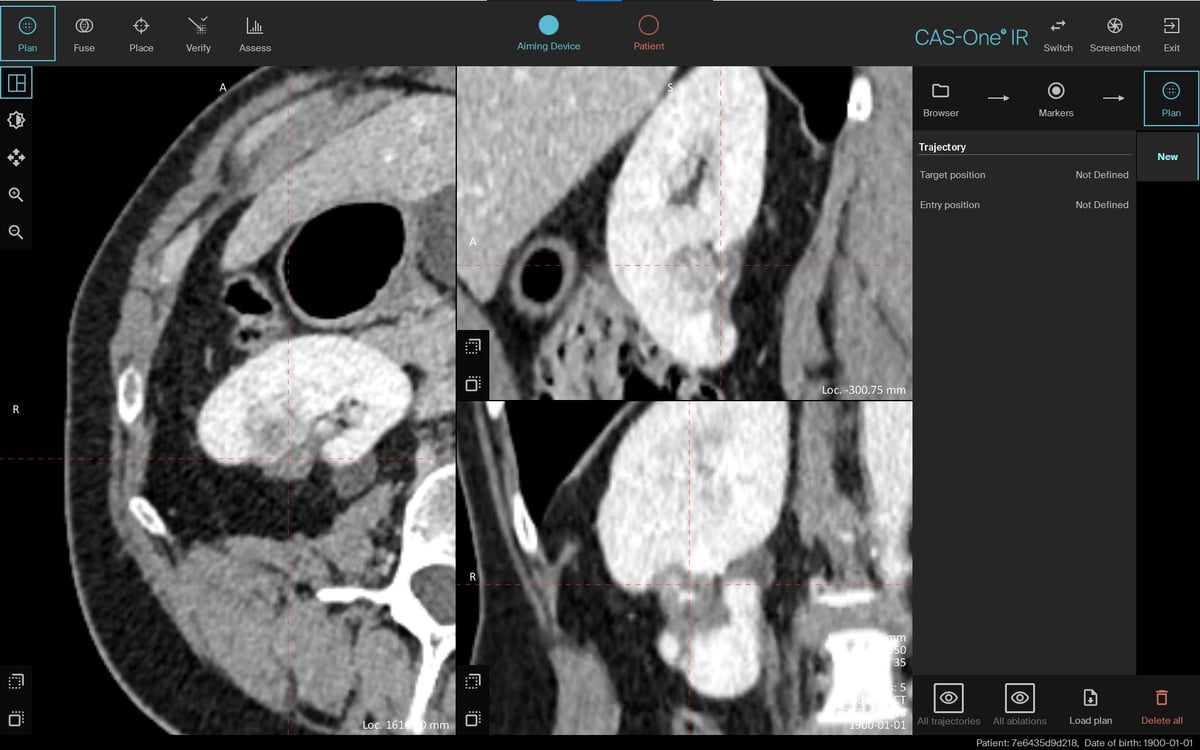
Initial scan with the lesion clearly visible.
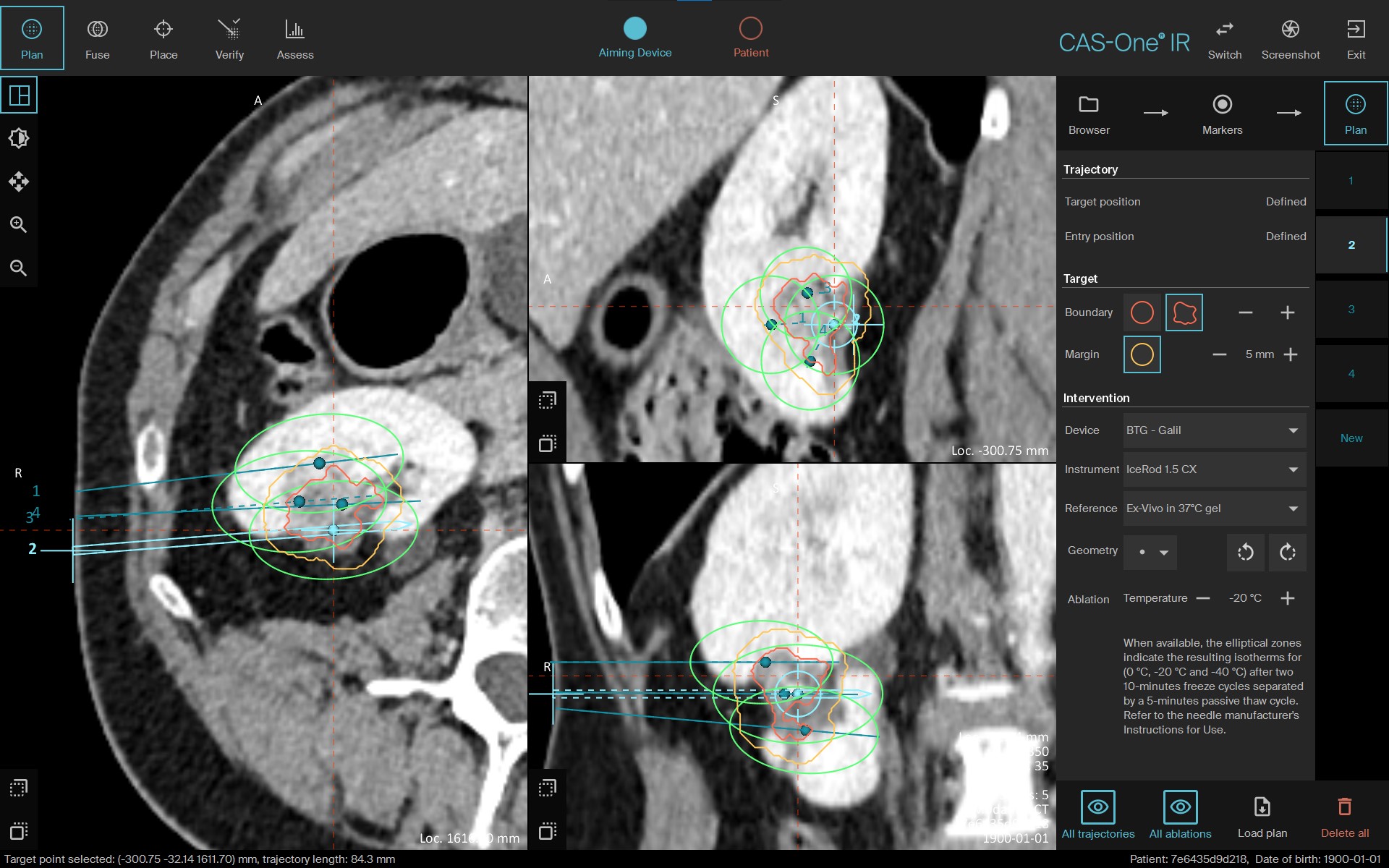
Planning with CAS-One IR, a four needle overlapping plan as shown in MPR.
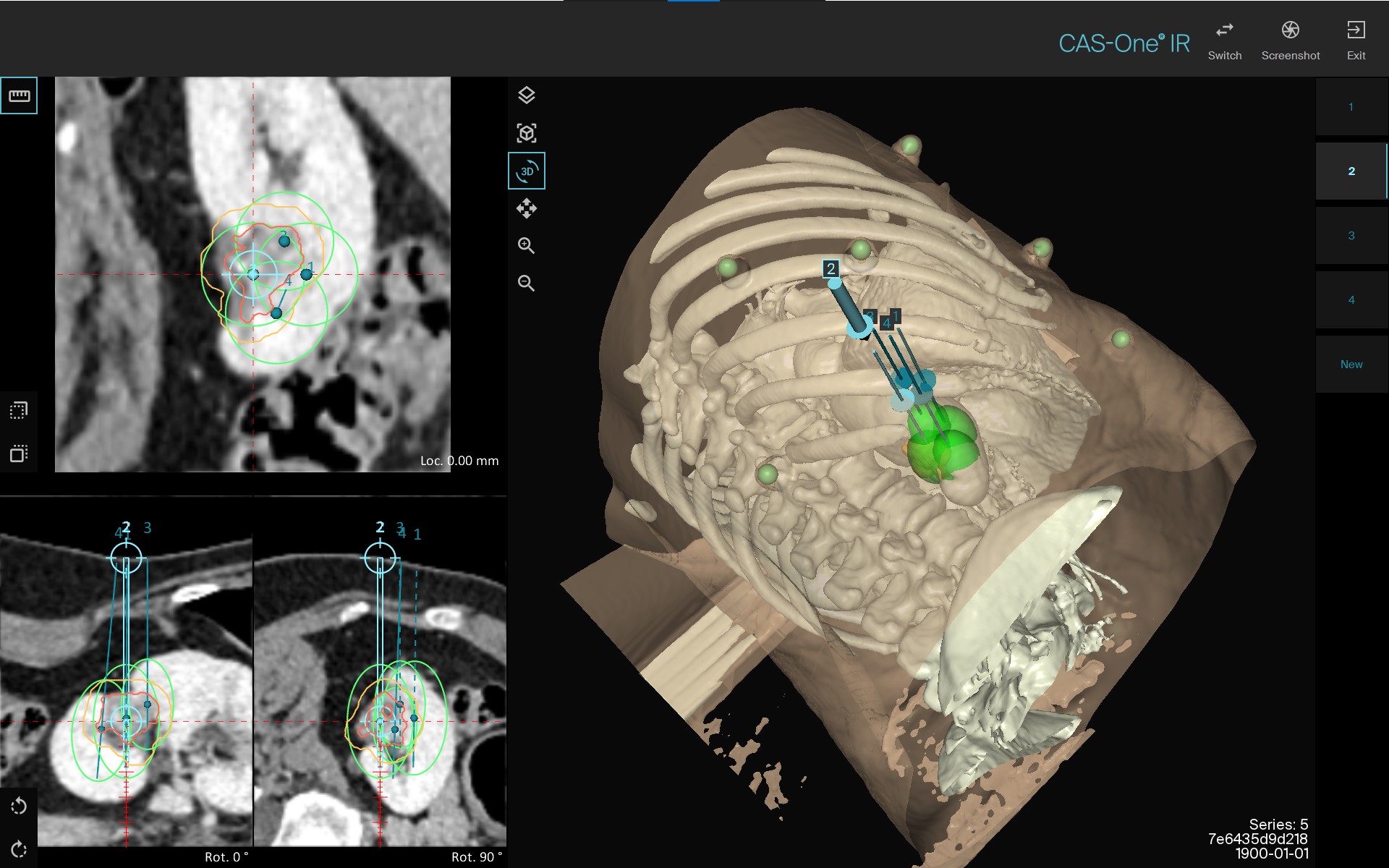
Needle-eye views.
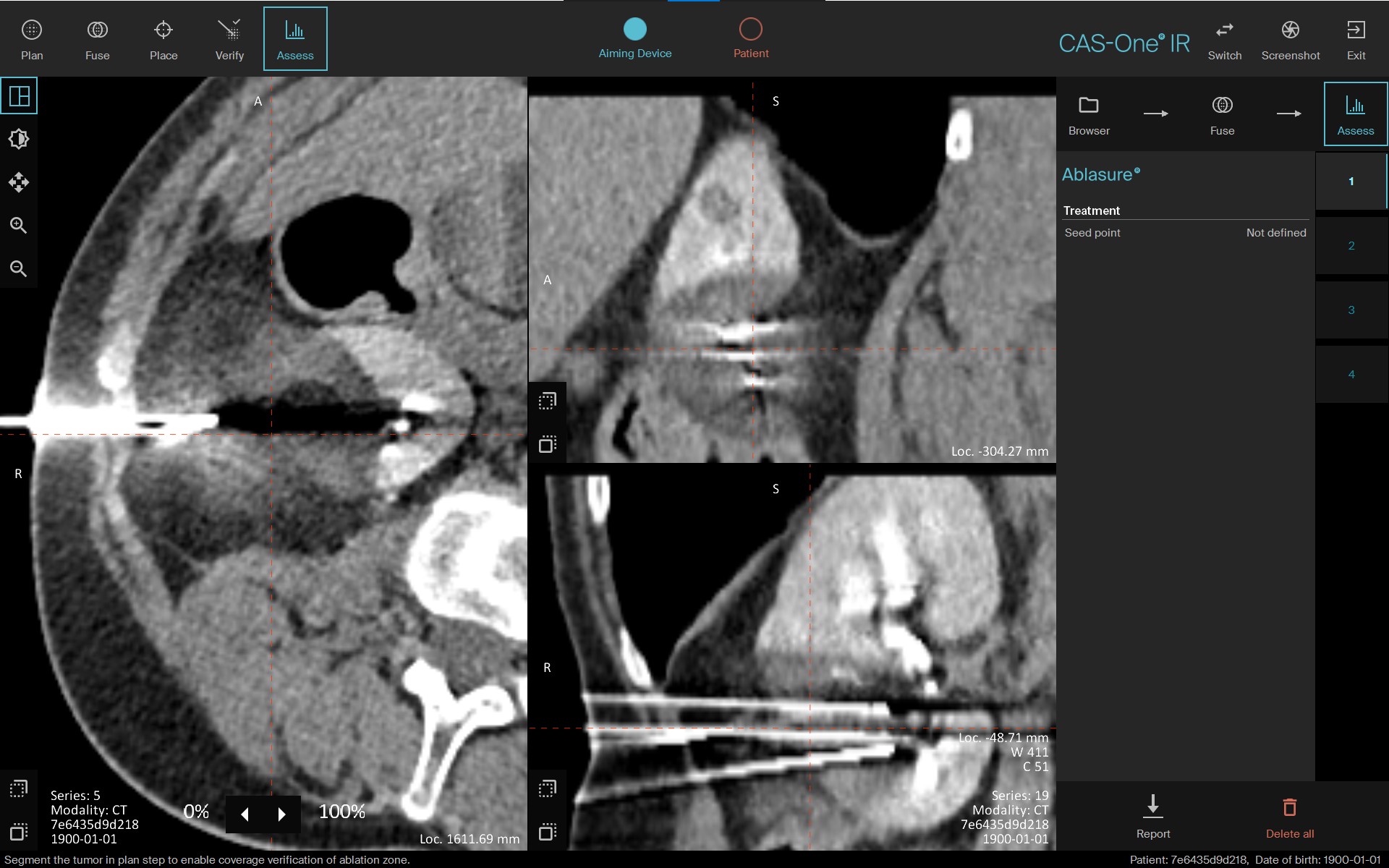
Four needles positioned according the predefined plan.
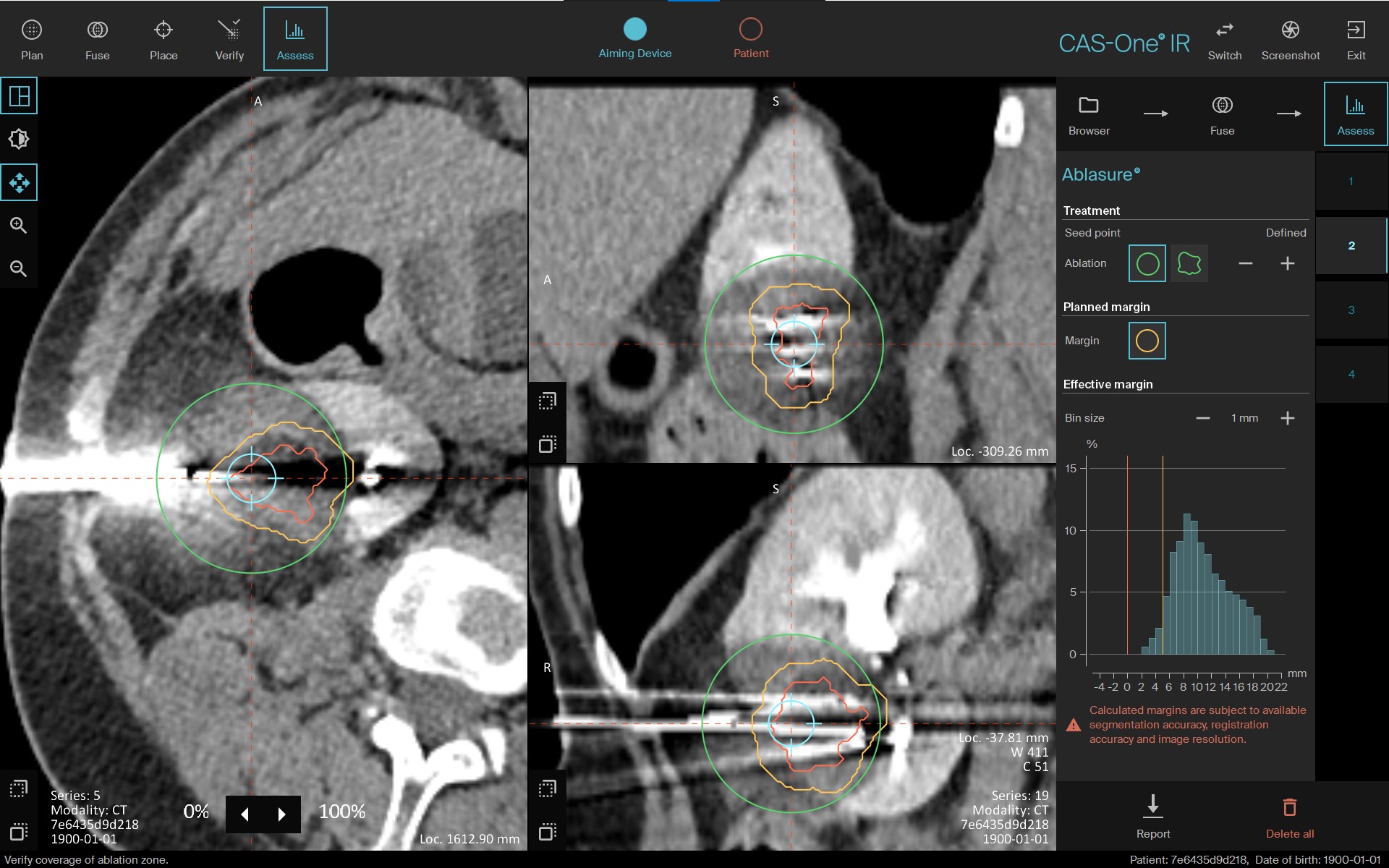
Ablation confirmation with AblaSure, proving technical success with clear margins.
A video above showcases the iceball in several planes.
Name: Prof. Dr. Romaric Loffroy
Institution: Dijon University Hospital (France)
Patient age and sex: 63 years, female
Initial condition:
- In 2006, the patient was initially diagnosed with T2N0M0 grade 3 clear Renal Cell Carcinoma of the left kidney, which was treated with a full nephrectomy.
- Two new lesions were discovered on the right kidney in 2022, a large lesion (2.1x1.6 cm.) in the inferior part of the kidney and a smaller (1x1cm.) invisible lesion.
- In the period between 2006 until the discovery of the two suspected lesions in 2022, the patient remained under surveillance, but no oncological activity occurred.
Treatment:
- The decision was made to perform a cryoablation of the large lesion, with sufficient clinical margins, using CAS-One IR guidance in order to preserve the renal function of the solitary kidney.
- A four-needle arrangement was planned to provide good coverage of the lesion, plus margins, but also to take into account tissue preservation.
- The four needles were successfully navigated, positioned and ablated.
- A "watch and wait" approach will be used for the smaller lesion, where further treatment will be postponed until renal functionality and tumour growth is assessed post-ablation.
Result:
- The cryoablation ice ball showed coverage of the lesion and the treatment was a technical success.
- Ablation confirmation (AblaSure) confirmed good coverage of the tumour and clinical margins (A0 ablation).
- Sufficient preservation of healthy tissue on the superior aspect of the kidney was also confirmed.
- The patient did not have any complications during the treatment. No haematuria was present after and no other complications were observed post-procedure.
- Quality Ablation provided the user with a certain tissue-sparing approach, facilitating a fast recovery, less complications thus better treatment outcomes and prognosis for the patient.
- A CT/MRI follow-up is scheduled in 6 weeks.
Learn more about the stereotactic navigation system CAS-One IR.


